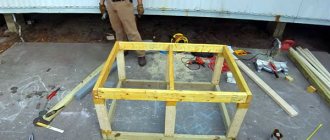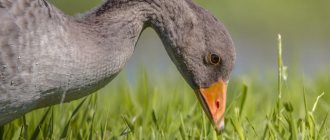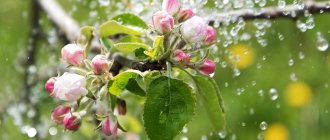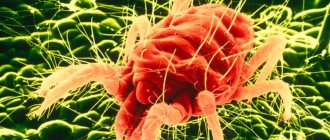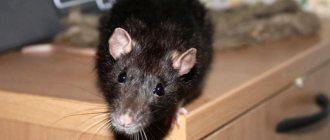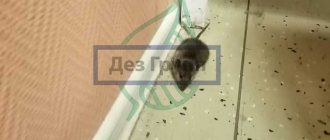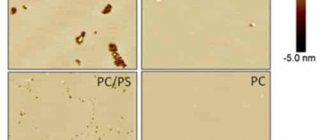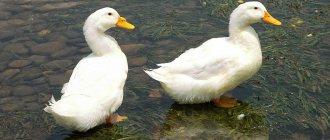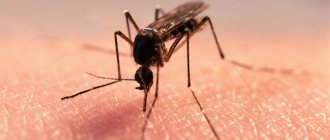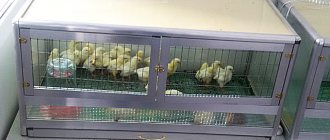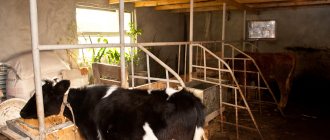When growing nutria, it is necessary to equip a place for the animals to live. Breeding nutria in cages is the most economical way to organize space. The cells take up little space and are suitable for long-term use. You can purchase them or design them yourself. In a detailed analysis of which cages are most suitable for nutria, it is important to take into account the physiological characteristics of the animals, their feeding needs, frequency of cleaning, and other nuances.
Arrangement of the enclosure
You need to decide for yourself which side to make from slate and which from mesh, so that your animals are comfortable. We give approximate dimensions of the enclosure; it’s okay if they are larger, for example, 3.5×6 meters or more. A female placed in a neighboring enclosure will be within the visibility range of the rest of the family members. This means that after giving birth and breastfeeding, her return to the family will be peaceful without fights.
Cages for solitary confinement
The enclosure with the babies should also be located nearby. Children can get acquainted with older individuals through the net. Meanwhile, if necessary, they can be moved to a larger one. But in any case, you need to do this carefully and observe their behavior for several days.
Nutria cages next to the pool
The cages in the breeding enclosure should be placed on a hill, this will be a resting area for the nutria. When cleaning enclosures, animals are usually locked in cages so as not to be disturbed. At the bottom of the enclosure, you can make a channel from concrete that will pass through several enclosures at once. Along the boundaries of the enclosures it can be partitioned off using a net. Undoubtedly, this is a very good decision. Especially if you have not one, but two, three or more enclosures. This solution allows you to change the water in all enclosures at once without complications, draining the dirty water and adding clean water. At the end of the pipe, a waste pit or reservoir is dug to drain dirty water. Dirty water can be used to water the garden.
Conclusion
The proposed cage maintains a comfortable temperature well in both summer and winter. You need to install a container with water for bathing in it. Fine mesh on the walls prevents the plywood from being chewed. All materials are light enough, and even one person can carry the empty cage by removing the roof.
If the female living in it gives birth, then it is enough to install a drawer from a desk or cabinet in the far corner. This will be enough for her to build a nice and warm nest for the babies, and she can watch them without opening the door.
The advantage of breeding nutria
All animals of this species love to swim, even those raised for meat, which is highly valued. Primarily due to its excellent taste and high digestibility. Nutria meat is fried quickly for literally fifteen minutes. Many gourmets prefer the meat of these animals to rabbit, turkey and even ostrich meat. It also has healing qualities and is very often recommended for diseases of the gastrointestinal tract.
By the way, those who worked with rabbits switched to breeding nutria. Since these animals get sick less, they grow better and are more expensive.
The main thing is not to be lazy and create good living conditions for them. It is inexpensive, and most of the work, including cages and enclosures, can be made with your own hands from scrap materials. To save money, you can purchase everything you need not in stores, but at scrap metal collection points.
How to choose the right cage when purchasing
When choosing a ready-made cage for nutria, you should carefully evaluate all its pros and cons.
In addition, you need to take into account:
- climate conditions under which the structure will be operated;
- number of rodents that will be kept.
The cage should not be cramped, otherwise fights will occur between the animals, which have a detrimental effect on the productivity of nutria, their health, and the quality of meat and skin. An excellent option are portable models, which not only make it possible to move houses from outdoors to indoors or vice versa, but also allow structures to be transported over long distances.
Did you know? In terms of durability and quality, nutria fur is not inferior to fox and mink fur. Nutria skin has the highest quality in the cold season.
House options
For a long time, domestic nutria breeders made houses for nutria from boards twenty to twenty-five millimeters thick. Nesting and feeding compartments must be provided.
A wooden pipe is provided to allow animals to enter the paddock. The exit from the house to the paddock must be equipped with a special valve.
The floor in the house is also made of boards. However, to prevent rodents from spoiling it, we stuff it with a mesh or metal sheet. The mesh should have a fine mesh. Undoubtedly, so that the paws of animals do not fall into it and they do not get hurt.
Also, the pipe leading to the paddock should be protected with metal. In short, all wooden parts to which animals have access must be protected with a mesh or metal sheet.
General Content Features
The most common question among beginning nutria breeders is how to properly maintain and breed nutria. After all, in order for the animals to reproduce well, grow and not get sick, the conditions must be as favorable as possible for them.
So, the optimal option for today is the construction of a special enclosure with an adjacent walking area. Pool deck equipment is highly recommended as nutria are aquatic animals.
It is important to maintain optimal air temperature in the enclosure, since nutria cannot tolerate cold weather. Air temperature below +8 degrees
is dangerous for the life of animals, and the optimal temperature is around +15-20 degrees. In any case, females need to be provided with a room with a temperature of at least +15 degrees, since in a colder room the survival rate of the cubs and the level of fertility of individuals is very doubtful. In addition, the cubs are born wet, and if they get into a cold room, they can simply freeze and die from hypothermia.
You may also be interested in information about how much a dwarf rabbit costs.
In the video there is an enclosure for nutria:
Enclosures for nutria are built based on the following considerations. Designed to support a family. This is the largest enclosure - a male and several females live in it.
Designed for keeping immature young animals. The cubs are transferred to this enclosure when they reach one month of age. And they are either kept until 3-4 months (puberty), or until slaughter.
Intended for breeding individuals. It houses purebred animals that are bred to improve the breed of the entire herd.
“Family” and “breeding” enclosures offer the greatest comfort. Premises intended for marketable young animals are usually provided with only the most necessary things.
Keeping in enclosures
Keeping nutria in enclosure cages is a must. These animals cannot live on free grazing; they will scatter instantly. Animals are intended for group settlement, although they can easily live separately. But the latter content option is rare, since on an industrial scale it is not rational.
Breeding animals are usually kept separately to ensure the purity of the blood. Young animals that have not reached puberty are also kept separately. Typically there are from five to 15 individuals in one enclosure.
Nutria must have a house in which the animals can hide from bad weather, rain or too active sun in the summer. Since nutria are rodents and often gnaw wooden boards, it is recommended to upholster the houses with metal mesh. Each house should be equipped with two rooms with two separate entrances: this will provide the nutria with greater comfort and freedom of movement. Anyone who raises rabbits and other small animals should understand how to treat coccidiosis in rabbits.
The video shows how the keeping in enclosures takes place:
In winter, the house needs insulation around the entire perimeter so that the animals inside the room are warm and there are no drafts. Straw is often used for insulation.
Recommendations for selection
When choosing the type of cage for nutria, you need to consider:
- weather conditions in the region;
- number of animals;
- structural strength;
- its durability.
This is why experienced nutria growers prefer metal cages. Animals cannot damage the structures, they do not rot from animal waste products, the cages are clearly visible and washable. For the winter, the structures are put away in a warm shed, and in the summer they are placed under a canopy to protect them from the sun and rain.
Step-by-step instructions for making a nutria cage with your own hands
Despite the complexity of the manufacturing process, you can:
- Save 2/3 of the budget allocated for the purchase of a finished cage.
- Make a cage according to your own requirements for the cage: size, material, insulation, shape, number of feeders, doors for moving rodents for a walk, etc.
Tools and materials
To make a stationary cage for ten nutria you will need the following tools and materials:
- concrete pipes – 4 pcs;
- metal pipes – 5 m;
- mesh for making the base of the cage;
- flat slate or durable boards;
- cement and sand - 1 bag;
- plywood;
- hammer;
- nails for fastening slate;
- Bulgarian;
- welding machine, electrodes;
- wire cutters;
- galvanized metal sheet;
- screwdriver
Owner
>> Livestock >> Fur farming >> Breeding and keeping nutria
Nutria are quickly tamed, but they are very shy. When caught, their pulse rate increases to 70-80 beats per minute. Normal body temperature is 37-38 degrees.
C, respiratory rate per minute - 45-55. Hypothermia of the body in water is prevented by a reflex - a narrowing of blood vessels occurs.
Despite physical activity during bathing, the animals’ metabolism does not increase, since this rodent is characterized by a slow heartbeat.
Favorable ambient temperature for nutria is 15-20 degrees. C. In shaded cages and the presence of water for bathing the nutria and in heat up to 40 degrees. feel fine. But under unfavorable conditions and temperatures above 40 degrees.
Their thermoregulation may be impaired, and their body temperature may increase by 3-5 degrees. , fatal heat stroke can occur.
These animals tolerate frost satisfactorily when kept in insulated houses in cages and without water.
In nutria, adaptation to cold occurs mainly not due to the intensity of metabolic processes, but by reducing heat transfer. In this regard, breeding of nutria outdoors in the northern regions of the country is limited. Nutria adapt to high temperatures due to the ability to sharply reduce metabolism.
What conditions do nutria need?
Nutria are not too demanding on living conditions, but they have their own specific needs. The most important factor for them is the abundance of food.
Although the main food during the growing season is green food, and hay for the winter, you should know that the nutria’s need for concentrated food is very high.
Nutria growers must have a sufficient amount of grain, mainly barley, wheat, corn, or several other feed additives, crackers or compound feed. If there are no such additives, it will be very difficult to grow nutria. In winter, it is necessary to have a sufficient amount of succulent feed, for example, potatoes, beets, carrots, etc.
Along with the feed, the fur farmer must have an appropriate plot of land (fenced garden, courtyard, etc., which should be far from the road, busy traffic and noise. The size of the plot depends on the method of keeping nutria the fur farmer will use.
The most common practice is to keep animals in regular paddocks with wooden or brick houses and a pond, which must be of sufficient size and a constant source of water (stream, pipeline, etc.).
When keeping nutria in cages, less space is needed, since the cages can be placed in a greenhouse, garage, or under a canopy. Small containers for water are installed in the cages, or the nutria are kept without water. In this case, the cells are placed only in a bowl of water.
Breeding nutria in cages, compared to breeding on free ranges, reduces the time required to care for the animals.
Places where nutria are kept should be separated from places where farm animals, birds, etc. are kept. Too open sunny places are not suitable for housing nutria (in summer, animals suffer from overheating), as well as cold, foggy lowlands and open places where strong winds blow.
What devices are suitable for nutrias
Classic system for placing nutria in pens (dimensions, see Doll)
The main devices for keeping nutria on a farm (breeding groups, families, weaners) are a pen or a cage. In Slovakia, these animals are often housed in pens 1.2-1.5 m wide and 1.6-2 m long with a concrete floor. The floor has a slight slope and an inlet to a pool of water.
At the transition from the ground part of the pen to the pool, a so-called bench is installed. This is the shallow part of the pool, approximately 300 mm wide, gradually turning into the pool itself, the depth of which is 350-450 mm. The outlet is located at the lowest part of the pool.
In the rear part of the paddock, a house is equipped, the width of which corresponds to the width of the paddock, and the depth is 600-800 mm. Since the house serves to protect animals from adverse weather, it must be well insulated. The house can be brick with cement plaster or other suitable material.
If it is wooden, then its inner side should be lined with tin so that nutria cannot gnaw on it. The top of the house is covered with a hinged lid made of boards covered with roofing felt. At a height of approximately 0.5 m from the floor of the house, small ledges can be placed on the walls, on which mesh frames with hay are placed in winter for feeding the animals and for insulation.
The fences of the pens on the sides and front should be 800-900 mm high. They must be made of durable and smooth material, for example, ethernite plates, metal sheets, concrete, etc. Mesh fences are unsuitable, because animals can see each other through them, this bothers them, and they can climb over the mesh.
To make better use of space and reduce the cost of constructing fences, you can build blocks of walking yards with a common pool. In this case, the water space between individual paddocks should be divided by frequent metal bars, preventing animals from getting through to each other.
When building paddocks, it is necessary to ensure that the floors in them are smooth, in order to prevent abrasion of the hair on the belly of the animals - the most valuable part of the skin.
The transition from land to pools should be done in such a way that animals, especially young animals, can easily enter the water and exit back to land. On the bench, animals cool down on hot days and enjoy combing their fur.
The size of the walks should be calculated according to the estimated number of animals that should fit in the house.
What cells are suitable for keeping nutria?
Cages for nutria are made of metal materials (nutria chew wood). The walls of the cells can be made of metal sheets, mesh, iron rods, etc. The cells must be closed at the top so that the nutria do not crawl out of them.
The floor is made either entirely from a metal sheet, or lattice, made from a suitable mesh with cell sizes of no more than 25x25 mm. The cages are installed on legs approximately 0.5 m high; The height of the cells is 0.6-0.8 m.
If you want to combine the cellular maintenance of nutria with the use of a pool, then it must be metal, of the same design as for free-range keeping. When keeping animals in cages without bathing, only drinking bowls with water are installed in the cages.
In the back of the cage there is a wooden booth, upholstered on the inside with a metal sheet, slabs of ethernite or Heraclitus, etc. It is covered on top with a wooden hinged lid. The cages are placed either in the open, covered with lids, or under a canopy. In winter, it is recommended to insulate them from the sides. It’s also good to put them away for the winter in a shed, barn, etc.
Diagram of a facility for placing nutria in cages
nutria in cells
It is advisable for a beginning nutria breeder to visit one or two nearby farms, build structures for keeping nutria and prepare the required amount of feed.
Nutria can be purchased through regional societies of rabbit breeders and amateur fur breeders, as well as at the market. Healthy nutria from 2 months of age and older are subject to sale.
It is best to buy females at the age of 2-3 months, since at an older age they are uncooperative and it is difficult to form groups of them for mating.
Females 5 months older should be purchased in already established groups (5-7 heads), ready for shoal mating. When choosing nutria, you need to pay attention to their health status. Healthy guard hairs are brightly colored and shiny. If it is dull and disheveled, the animal was not fed and maintained satisfactorily.
Bright orange incisors indicate good health. Young and old nutria have lighter incisors. If they are pale, with dark spots, the body is weakened.
The most suitable season for purchasing nutria is the warm season, when animals can be carried or transported a short distance in uninsulated cages, in ordinary bags or closed baskets.
No more than 2-3 young animals are transported in one bag. Adult nutria, especially males and pregnant females, are transported one animal at a time in a cage 50–60 cm long, 30–40 cm wide and high.
This portable cage can be made from metal mesh, boards or thick plywood.
Nutria quickly gets used to humans. She can be kept as a pet. Nutria remember their nickname well and willingly go to their owner, whom they recognize by their voice and smell.
When catching nutria for transplantation and inspection, you need to drive the animal into a house or into a corner, take it by the middle of the tail (in this case, the animal is allowed to rest its front paws on the edge of the cage or house) and with the other hand take it in the area of the front paws (under the chest), grabbing a little skin, lift and hold in weight, then the head is raised above the body.
The head of an aggressive nutria is held with a spatula. When transplanting such nutria from cell to cell, they can be taken by the tail and transferred in this state.
You can also grab the back legs so that she doesn't scratch her. Puppies up to 2-3 months old are held by hand under the arm and in this position they are examined, tattooed, treated, etc. When catching runaway animals, traps of various designs are used.
When transported in mesh or wooden boxes, animals sometimes rush in all directions and hit the wall, injuring themselves. In such cases, the mesh box is covered with something dark.
Pregnant females must be handled especially carefully - when fishing, you should not grab the tail sharply and hold it in an upright position for a long time, this can cause abortion. Pregnant females can also be carried or transported in bags.
The house of a pregnant female is cleaned in her absence, when she is on the walk, and the walk is cleaned when she is in the house.
A nutria bite is dangerous! It can be instant and powerful. Nutria can bite your finger. Therefore, there is no need to frequently disturb the animal during the breeding season.
The cause of anger is malnutrition in group housing. Unnecessarily, you should not touch the nutria in the back area, it reacts negatively.
The animal remains completely calm when you touch or stroke its belly.
If you need to examine the nutria from the abdomen, take it with both hands, hold it in the area of the tail and shoulder blades, turn it onto its back with a quick, strong movement and press it against the lid of the house.
The best rule for taming nutria is to acquire them at a young age, as puppies. Puppies quickly become tamed to human hands and, having matured, behave calmly.
For breeding nutria in captivity, a pool of water for swimming is not necessary.
Source: https://www.sobstvennik.org/livestock/nutria/05.php
